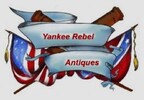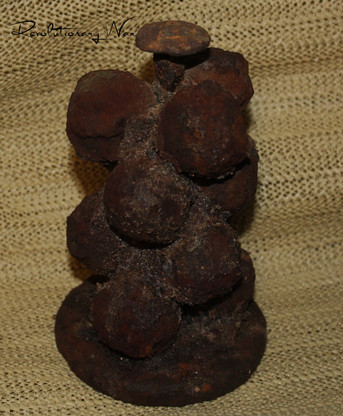 Loading... Please wait...
Loading... Please wait...-
Call us on (973) 810-2976
- My Account
- Gift Certificates
- Items / $0.00
All prices are in All prices are in USD
Categories
- Home
- Artillery related items
- Rare - Revolutionary War Artillery Stand-of-Grape, recovered many years ago at Lake Champlain, NY
- Home
- NEW ITEMS
- Rare - Revolutionary War Artillery Stand-of-Grape, recovered many years ago at Lake Champlain, NY
- Home
- Identified Artifacts
- Rare - Revolutionary War Artillery Stand-of-Grape, recovered many years ago at Lake Champlain, NY
- Home
- Excavated Artifacts
- Rare - Revolutionary War Artillery Stand-of-Grape, recovered many years ago at Lake Champlain, NY
- Home
- Late 18th Century / Early 19th Century
- Rare - Revolutionary War Artillery Stand-of-Grape, recovered many years ago at Lake Champlain, NY
- Home
- Revolutionary War items
- Rare - Revolutionary War Artillery Stand-of-Grape, recovered many years ago at Lake Champlain, NY
- Home
- REVOLUTIONARY WAR ARTILLERY
- Rare - Revolutionary War Artillery Stand-of-Grape, recovered many years ago at Lake Champlain, NY
Rare - Revolutionary War Artillery Stand-of-Grape, recovered many years ago at Lake Champlain, NY
Product Description
This is another nice early piece coming out of a 60-year collection of French & Indian War, Revolutionary War, and War of 1812 artillery. Being offered is a Revolutionary War artillery Stand-of-Grape. It has a diameter of 4”, stands 6 ½” high, and weighs 6-pounds, 8-ounces. The round balls are approximately 1 ½”. It was recovered intact many years ago at Lake Champlain, NY.
The naval Battle of Valcour Island, also known as the Battle of Valcour Bay, took place on October 11, 1776, on Lake Champlain (see pictures). The main action took place in Valcour Bay, a narrow strait between the New York mainland and Valcour Island. The battle is generally regarded as one of the first naval battles of the American Revolutionary War, and one of the first fought by the United States Navy.
Most of the ships in the American fleet under the command of Benedict Arnold were captured or destroyed by a British force under the overall direction of General Guy Carleton. Despite losing 11 ships and nearly 200 sailors to capture or casualty, the American defense of Lake Champlain stalled British plans to reach the upper Hudson River Valley.
A Stand of Grape consisted of a cluster of iron balls packed around an iron rod fixed to a round iron base and covered with cloth, stitched to hold the balls together in a tight bundle like a cluster of grapes. The cloth disintegrated when a round of grapeshot was fired, and the balls blew out of the cannon like a large shotgun blast. Like case shot, grapeshot was brutally effective against attacking infantry at one hundred yards or less. It was also effective against ships. There is a Stand of Grape in my collection that still has remnants of the cloth, also from Lake Champlain (see pictures).
The projectile remains in nice condition and still solid. This collection began in the late 1950s and was created by private acquisitions, closed museums, and from lake divers. The collector meticulously displayed and cataloged every piece along with its provenance. His markings were crude at the time, but now they have proved to be very important. Many of the pieces went through electrolysis to remove crusted rust.
This is the first time this rare piece has been on the open market, and it is truly a great piece of early American History. It definitely merits a place in an advanced collection or museum. Complete examples of these rounds are very rare, in fact many museums don’t have them in their collections. As with all the pieces in this esteemed collection, a Certificate of Authenticity will be included. With all items on the website, a very friendly layaway is available.



